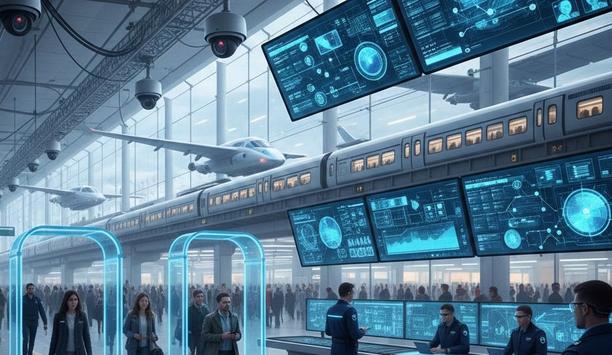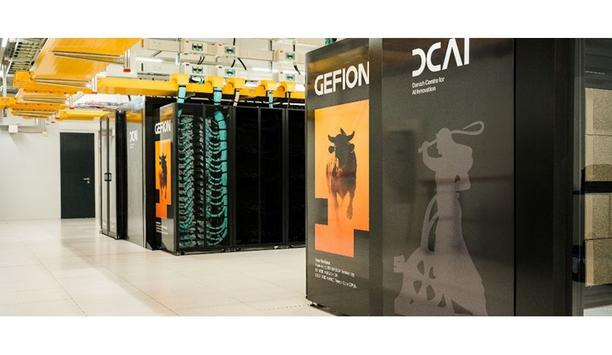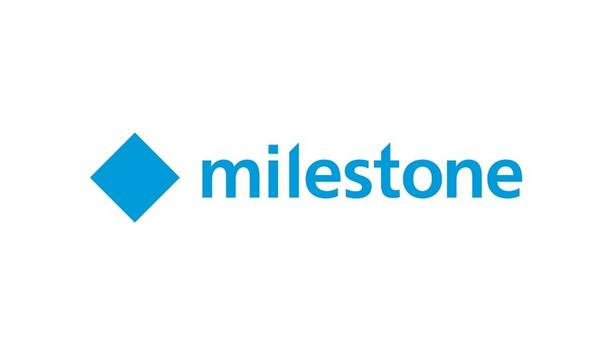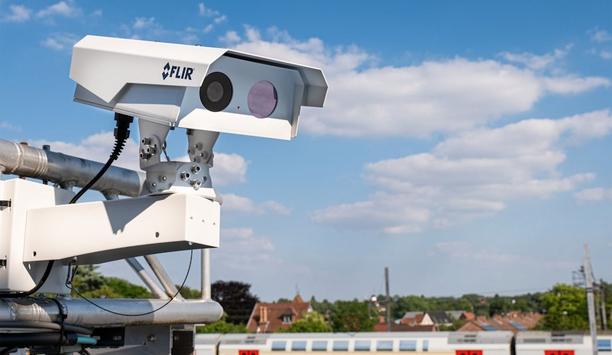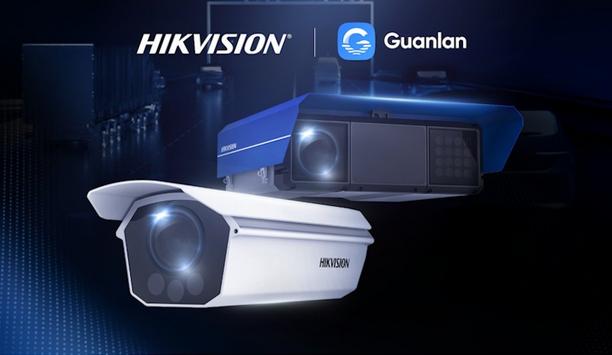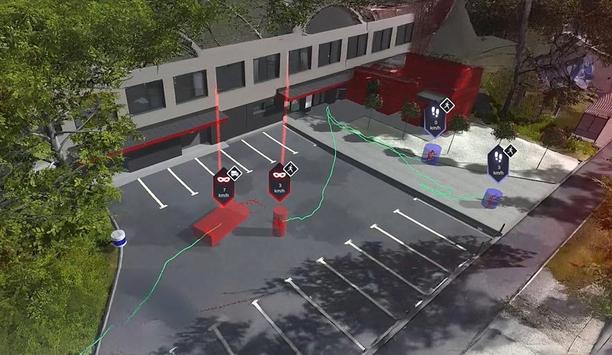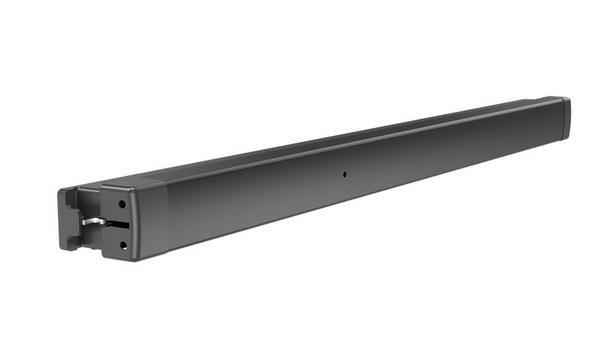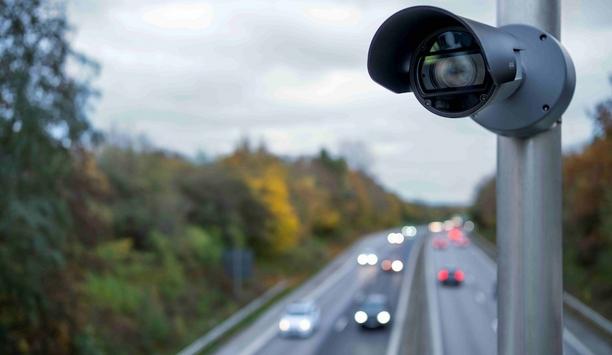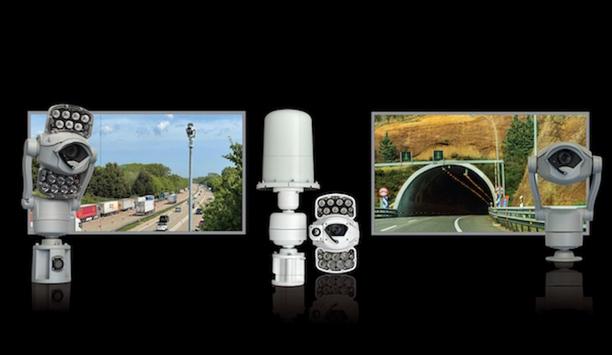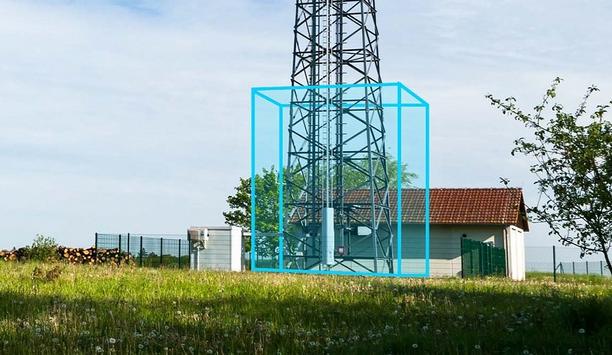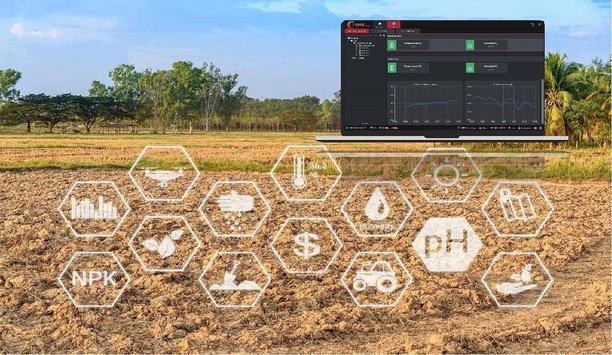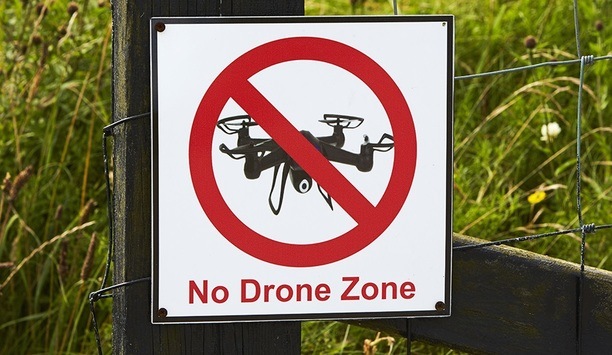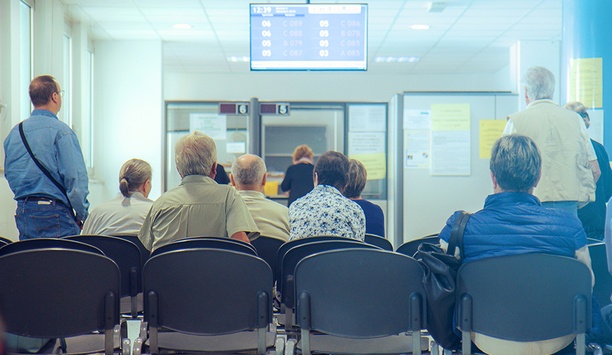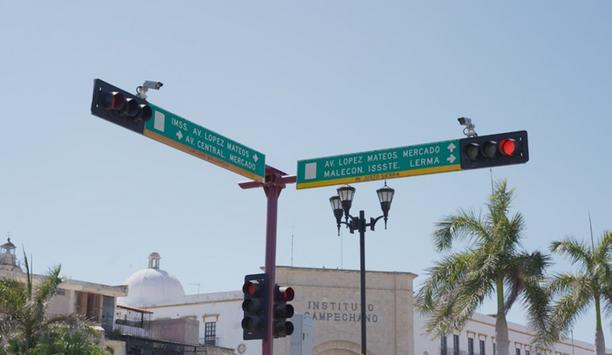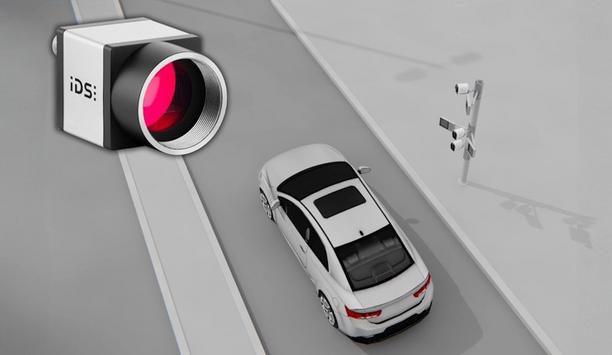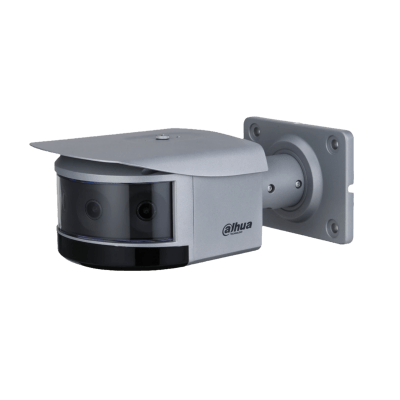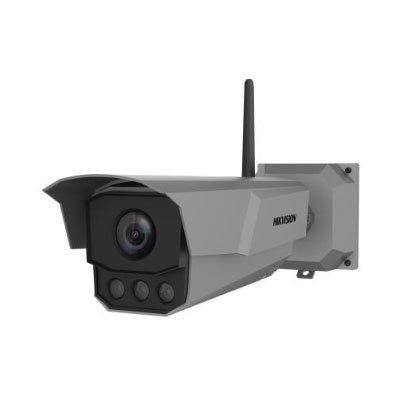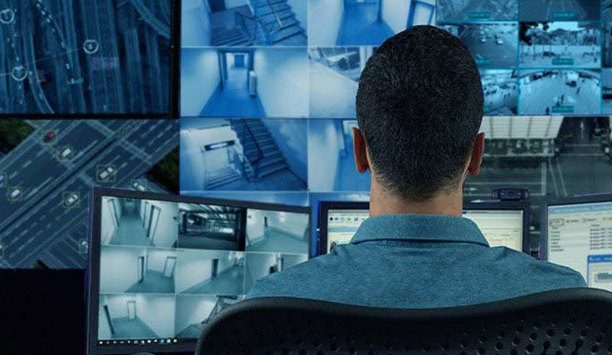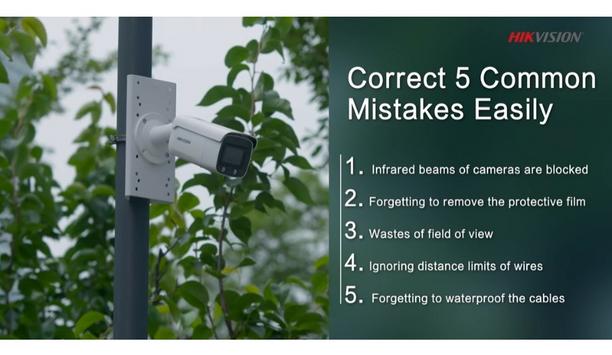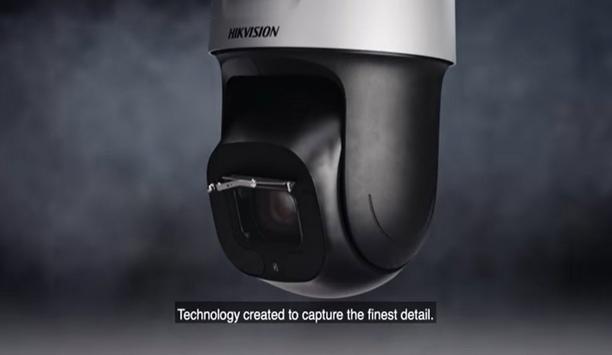Traffic surveillance
Transportation systems need robust physical security to protect human life, to ensure economic stability, and to maintain national security. Because transportation involves moving large numbers of people and critical goods across vast, often interconnected infrastructure, it presents a highly attractive target for various threats. More threats equate to a greater need for security. We asked our Expert Panel Roundtable: What are the emerging applications of physical security in the transportation...
Milestone Systems will use the GEFION supercomputer to accelerate the development of sovereign, responsible, and high-performance AI within Europe. The work will focus on the deployment and fine-tuning of the world’s most advanced AI Vision Language Model (VLM) for traffic and smart city applications, developed by Milestone in collaboration with NVIDIA. Today, millions of video cameras capture valuable footage that could improve everyday life. Yet much of this potential remains untap...
Milestone Systems, a world pioneer in data-driven video technology, announced a forthcoming generative AI-powered video analytics plug-in for its XProtect® video management software, developed in collaboration with NVIDIA. Designed to help operators contextualize alarms and focus on what truly matters, the new tool automates video review, filters out false alarms, and based on initial findings could reduce up to 30% of operator alarm fatigue. A beta version will debut at Smart City Expo Wo...
Blaize Holdings, Inc., an edge AI computing pioneer, announced that its edge AI platform will be deployed across more than 250,000 intelligent surveillance endpoints beginning in Q2 2025 and continuing through 2026 — supporting a national-scale transformation of real-time smart infrastructure across Southeast Asia through a scalable, hybrid AI deployment. The total value of the contracted purchase order is approximately $56 million, with $6 million in initial revenue expected to...
At FLIR, they see things a little differently. They are constantly looking of new ways to enhance the safety and efficiency of cities around the world, through ground-breaking innovation and advanced technological excellence. This way of thinking has led us to find solutions that take care of road systems, and most importantly, take care of the people using them. Intro of FLIR TrafiSense Dual AI FLIR will demonstrate the seamless integration of its updated AI sensors into traffic lights Cont...
Hikvision, a pioneer in the AI-powered Internet of Things (AIoT), has released a suite of next-generation checkpoint cameras, traffic incident detection cameras, and servers, powered by advanced large-scale Traffic AI models. These innovative products are designed to significantly enhance detection accuracy, reduce false alarms, and improve overall traffic safety. Revolutionary AI models Hikvision's large-scale traffic AI models are based on the Guanlan Large-Scale AI Model platform. They hav...
News
LiDAR, which stands for Light Detection and Ranging, is a technology pervading many different industries. One of the biggest examples is driverless cars. LiDAR can help a vehicle understand and respond to the changing environment around it. An increasing number of car manufacturers are introducing LiDAR-based systems, such as Volvo's EX90 fully electric SUV, to help keep the vehicle a safe distance from other traffic and obstacles in the road ahead. Bathymetric surveys The technology has even been used on spacecraft to monitor the Earth and to help Apollo 13 astronauts But it isn’t just on the ground where LiDAR technology is being used. Now, LiDAR is widely used for topographic mapping to create detailed three-dimensional representations of overland terrain, as well as Bathymetric surveys that study the depth of large bodies of water. The technology has even been used on spacecraft to monitor the Earth and to help Apollo 13 astronauts return safely. Next big thing in 2025 Given that LiDAR technology has been around since the 1960s, why have so many experts named it as one to watch and ‘the next big thing’ in 2025? Let's take the security industry as another example. ABI Research forecasts the worldwide market for smart LiDAR sensors in the sector will surpass three million total installations in the next five years. LiDAR enables virtual perimeter 'fences’ or ‘safe zones’ to detect and track unauthorized movement with pinpoint accuracy. This is undoubtedly a game-changing application; however, it is the ability to create digital twins using LiDAR that is causing a major paradigm shift. Modern 3D LiDAR systems In simple terms, a digital twin is a virtual model, or clone, of something that exists physically In simple terms, a digital twin is a virtual model, or clone, of something that exists physically. However, it is far more intelligent than a digital representation or map. Using modern 3D LiDAR systems, a digital twin can quickly run complex simulations to assess the likely impact of an almost limitless range of scenarios in the real world. Digital simulations based on highly accurate 3D LiDAR models can be used by shopping complexes, factories and warehouses, airports, critical infrastructure sites and even a whole town or city to understand how an incident or activity would play out in the real world. The applications are vast, and you don’t need to be a NASA scientist or have a space race budget to use it. latest advances in 3D LiDAR systems Now, the digital and real worlds are becoming increasingly interconnected. They create, inhabit and share virtual environments from Minecraft to the Metaverse. The latest advances in 3D LiDAR systems enable them to place the real world in the digital world, and in doing so can help to make the physical spaces safer, more secure, run with greater efficiency and capable of responding as environments and the demands placed upon them change.
Aesthetic options, in addition to robust security features, are increasingly important to architectural door openings. Adams Rite delivers, expanding its finish offerings for the 8800 Series Starwheel Rim Exit Devices to include Black Suede Powder (BSP). 8800 Rim Exit Devices Adams Rite 8800 Rim Exit Devices offers reliable security, durable construction, and streamlined design for narrow stile aluminum doors. Its unique Starwheel bolt interlocks door to frame to provide enhanced strength and prevent jamb spread, while a clean profile and fewer pinch points make it ideal for high-traffic storefronts. Life-safety and fire-rated exit devices The 8800 is part of a premium series of life-safety and fire-rated exit devices by Adams Rite, available with a range of mechanical and electrical options, multiple finishes, and compatible products for a seamless solution. Adams Rite offers the most complete line of exit devices and related hardware solutions in the industry to effectively secure single and pairs of doors with a unified look, standardized installation, and operation in any facility.
Alibaba Cloud, the digital technology and intelligence backbone of Alibaba Group, has been named a Pioneer in the 2024 Gartner® Magic Quadrant™ for Cloud Database Management Systems (DBMS) for the fifth year in a row. Evaluation criteria Gartner evaluates cloud DBMS vendors based on their Ability to Execute and Completeness of Vision, with criteria across 15 critical areas, including product or service, customer experience, market understanding, offering (product) strategy, and innovation, to determine their placement in the Magic Quadrant. As per Gartner, “Pioneers may represent diverse cloud ecosystems, of which their cloud DBMS is a part, or have good interoperation with such systems. These vendors demonstrate consistently high customer satisfaction and strong customer support.” Data management “We are honored to be named a pioneer in the Gartner Magic Quadrant for cloud DBMS report for the fifth year in a row,” said Dr. Feifei Li, President of the Database Products Business at Alibaba Cloud. “In the era when effective data management becomes a crucial infrastructure for business operation in a range of industries as well as for generative AI development, we remain committed to delivering cutting-edge and high-performance solutions that empower businesses to harness the full potential of their data.” Cloud-native innovation Alibaba Cloud introduced DMS: OneMeta+OneOps, a platform that enables unified management of data sources Alibaba Cloud offers a broad range of self-developed, cloud-native database products, including relational database PolarDB, data warehouse AnalyticDB, multimodal database Lindorm, and the Data Management Service (DMS), and constantly upgrades its product capabilities. At its flagship event Apsara Conference in 2024, to help organizations efficiently manage their data and unleash value, Alibaba Cloud introduced DMS: OneMeta+OneOps, a platform that enables unified management of data sources in databases, data warehouses, and data lakes across multiple cloud environments. The platform will boost data utilization rates by 10 times. Diverse and open ecosystem Alibaba Cloud is committed to establishing a diverse and open ecosystem with database vendors. Through collaboration with global partners such as MongoDB, ClickHouse, and SelectDB, Alibaba Cloud provides a variety of options for third-party database products, open-source products, and integrated solutions to support customers’ changing demands. Alibaba Cloud’s cloud-native database innovations as well as its partner ecosystem have been widely adopted by companies across diverse industries from finance, retail, and internet, to generative AI builders. MiniMax API Platform Embedded with built-in AI inference capability, Lindorm provides large-scale data storage and high-performance data MiniMax, an AI technology company in China, has leveraged Alibaba Cloud's multimodal database Lindorm as its underlying data service to build the MiniMax API Platform and GenAI application Hailuo AI. Embedded with built-in AI inference capability, Lindorm provides large-scale data storage and high-performance data retrieval capabilities, supporting MiniMax to quickly build its intelligent AI search services. TNG eWallet TNG Digital operates Malaysia’s largest fintech platform, TNG eWallet, serving over 22 million verified users and supporting payments for more than 2 million merchants nationwide. It worked with Alibaba Cloud to support its growing user base while ensuring a seamless experience. During the eMADANI event, TNG eWallet maintained a stable service with zero downtime, supported by Alibaba Cloud's advanced and secure cloud products. PolarDB, ApsaraDB By utilizing the cloud-native database PolarDB, the platform effectively managed a large volume of transactions, ensuring a seamless customer experience even during peak periods. Additionally, Alibaba Cloud provides the NoSQL database ApsaraDB for MongoDB to support TNG Digital eWallet to explore business opportunities through AI innovations. Secure, scalable, and efficient ZA Bank, the first and largest digital bank in Hong Kong, has fully migrated to Alibaba Cloud database services ZA Bank, the first and largest digital bank in Hong Kong, has fully migrated to Alibaba Cloud database services to achieve secure, scalable, and efficient data management. By adopting Alibaba Cloud relational database ApsaraDB RDS for MySQL within its core system, ZA Bank can quickly adjust computing resources and storage capacity based on business demand. Multi-layered security protections This on-demand scalability allows the bank to effectively manage traffic fluctuations. Additionally, RDS MySQL provides multi-layered security protections, including data encryption, access control, security auditing, and DDoS protection to ensure data security and privacy, while meeting compliance requirements.
Axis Communications, a pioneer in network video, has announced the release of two purpose-tuned cameras ideal for traffic surveillance and smart city initiatives. These powerful cameras can capture sharp license plate images 24/7 and help law enforcement agencies improve road safety and gather valuable intelligence. AXIS License Plate Verifier AXIS Q1800-LE-3 is an all-in-one license plate kit that includes everything in one device AXIS Q1800-LE License Plate Camera is preconfigured for accurate license plate capture 24/7 at speeds of up to 250 km/h (155 mph). It’s fully compatible with edge or server-based LPR software from any pioneering third-party vendor, giving customers the freedom to choose the license plate recognition analytics that best suits their needs. AXIS Q1800-LE-3 is an all-in-one license plate kit that includes everything in one device. With AXIS License Plate Verifier preinstalled, it can read plates at speeds of up to 200 km/h (124 mph). An edge-based license plate recognition approach means the camera manages processing and storage, eliminating the need for expensive servers and reducing bandwidth requirements. Integrate with VMS systems Both cameras can cover distances of up to 100 m (328 ft) during daylight. In pitch darkness, they can cover distances up to 50 m (164 ft), and up to 100 m (328 ft) with the optional accessory AXIS T90D20 IR-LED Illuminator. These purpose-tuned cameras require minimum setup. Image algorithms are preconfigured to focus solely on license plate capture. Built on the Axis open platform, they integrate seamlessly with VMS systems and support a wide range of third-party applications. Key features Product with AXIS License Plate Verifier preinstalled Product ready for 3rd party software Purpose-tuned for license plate recognition Read license plates up to 250 km/h (155 mph) Capture/reading range up to 100 m (328 ft) Robust design withstands tough weather Electronic image stabilisation With a robust design, these license plate cameras ensure reliable performance in extreme weather. They include a built-in weather shield and can withstand hurricane-force winds of up to 60 m/s (134 mph). Electronic image stabilization ensures stable images when the camera is subject to vibrations. Furthermore, a wide range of installation accessories is available for flexible mounting options. Furthermore, with gray-colored housing and a black weather shield, they blend into any traffic environment.
GroupBy Inc., a SaaS-based eCommerce search and product discovery pioneer, has partnered with adCAPTCHA, a cutting-edge security verification platform to elevate digital customer experiences by combining robust security measures with highly personalized product discovery shopping experiences. Bots Bots pose a significant threat to eCommerce businesses, accounting for half of global web traffic and costing millions of dollars daily in fraudulent activity. These malicious bots can manipulate search results, distort user behavior, and undermine the integrity of online shopping experiences. Data-driven decisions This innovative approach enhances user satisfaction and drives additional revenue through targeted advertising .GroupBy and adCAPTCHA's partnership empowers retailers to effectively identify and block malicious bot traffic, safeguarding their online operations. By seamlessly integrating adCAPTCHA's advanced human verification technology, retailers can provide personalized and targeted shopping experiences without compromising security. This innovative approach enhances user satisfaction and drives additional revenue through targeted advertising seamlessly integrated into the verification process, as well as improved reporting and analytics that empower retailers to make data-driven decisions for their businesses. Improving the digital customer experience Both GroupBy and adCAPTCHA are committed to improving the overall customer digital experience. By reducing bot traffic with adCAPTCHA, and by leveraging GroupBy’s AI-first eCommerce Search and Product Discovery platform, retailers can focus on serving real customers with intent-driven search results, personalized recommendations, and faster load times. This leads to increased customer satisfaction, loyalty, and, ultimately, higher revenue. Monetising security with personalized and targeted Ads According to Statista, $241m is lost daily to digital advertising fraud. adCAPTCHA goes beyond simple bot detection. Its innovative approach monetizes security by seamlessly integrating personalized and targeted ads into the verification process. This not only enhances revenue streams for businesses but also provides a more engaging and relevant user experience. By analyzing user behavior and preferences, adCAPTCHA delivers highly targeted ads that are more likely to resonate with individual users. Leveraging better reporting and analytics By filtering out bot activity with adCAPTCHA, businesses can leverage GroupBy’s enhanced analytics .With enhanced security, retailers can gain valuable insights into their website traffic. By filtering out bot activity with adCAPTCHA, businesses can leverage GroupBy’s enhanced analytics and reporting capabilities to accurately measure key metrics such as user behavior and engagement, click-through rates, and conversion rates. This data-driven approach enables retailers to make informed decisions about their marketing strategies and optimize their online presence. Enhancing AI training with clean data GroupBy's platform benefits significantly from clean and accurate data. By working together with adCAPTCHA to remove bot traffic, GroupBy can ensure that its AI models are trained on real user behavior, leading to more relevant and personalized search results. “At GroupBy, our mission is to transform the eCommerce experience into something seamless and engaging for users. Yet, the growing wave of fraudulent activity poses a serious challenge to achieving this goal,” stated Roland Gossage, CEO of GroupBy Inc. Improve search and product discovery “By partnering with adCAPTCHA’s cutting-edge technology, we enable retailers to integrate sophisticated security measures that not only protect their platforms but also open new opportunities for engagement." "Through adCAPTCHA’s unique ability to combine security with personalized and relevant ad delivery, retailers can enhance user experiences, boost revenue potential, and improve search and product discovery—all while creating a safer online environment.” GroupBy’s customers As an adCAPTCHA reseller, GroupBy’s customers can expedite the onboarding process GroupBy’s customers include some of the world’s largest B2B and B2C retailers with its revolutionary search and product discovery platform, powered by Google Cloud Vertex AI Search for Retail. As an adCAPTCHA reseller, GroupBy’s customers can expedite the onboarding process and streamline implementation for swift access to increased protection against online fraud. Accurate results Alfie Scarborough, founder, and CEO of adCAPTCHA, said, “Bots are compromising the efforts of retailers and advertisers, leaving brands exposed to cyber risks, excessive spam, and wasted marketing budgets." "Our partnership with GroupBy will deliver accurate results for digital platforms, cutting out bot traffic and reducing infrastructure costs, helping brands to optimize their marketing spend during a turbulent economic climate. Protecting user data, preventing automated fraud, and ensuring that personalization doesn’t cross privacy boundaries are among the growing trends in eCommerce, and with this partnership, we are placing security at the center of personalized shopping experiences.”
360 Vision Technology, the pioneering UK CCTV camera manufacturer, will be displaying their latest range of Pan, Tilt & Zoom (PTZ) Predator Ultra surveillance cameras, including stainless-steel and radar versions, at Highways UK, taking place at the NEC, 16-17th October. Exhibiting on Stand 2, Hall 5, 360 Vision Technology will be demonstrating how their HD PTZ, wireless TX and IP 68 rated, 316L grade stainless steel cameras can be used to provide reliable, high-quality monitoring for road safety, and traffic and infrastructure management. In addition, 360 Vision’s wide-area monitoring expertise will be demonstrated with their latest Predator Radar camera range. 360-degree radar detection 360 Vision will show how highly effective wide-area radar detection can be viewed for a broad range Spearheading the latest developments in cost-effective combined radar, surveillance camera, and analytics technology, 360 Vision will show how highly effective wide-area radar detection can be considered for a broad range of highway surveillance applications, including traffic, safety, and road infrastructure monitoring. The combination of 360-degree radar detection and powerful analytic programming enables Predator Radar to detect objects through smoke, fog, and even adverse weather conditions, allowing the combined surveillance camera to be directed to targets of interest – no matter what the environmental conditions. Range of robust traffic camera solutions “We’re looking forward to showing our latest range of robust traffic camera solutions at Highways UK,” says Tony Holloway, Technical Solutions Manager at 360 Vision. “For highways customers, our surveillance camera and radar technology expertise provide seamless operational benefits to ensure modern road networks operate optimally and safely.” Supporting many highway, town & city center, tunnel, bridge, and car park surveillance applications, 360 Vision Technology’s client base includes traffic management customers such as Transport for London (TfL), City of London Police, National Highways, UK Local Authorities, and many more.


Expert commentary
Open platform video technology software is more than just a product; it's a tool that helps customers achieve their desired business outcomes. Safety, round-the-clock security, and increased operational efficiencies are now the norm due to video technology. Responsible Technology Despite humanity’s impressive technological advances, we also recognize the immense responsibility that comes with technological innovation. It's not enough to focus solely on the positive impact video technology can make, we must also be vigilant in identifying and addressing any potential negative consequences it can have on society and its citizens. This is the role of Responsible Technology. Data privacy We want to use all the good things that technology innovation brings, whether it be video, AI, ML, facial recognition, etc. We want to use all the good things that technology innovation brings, whether it be video, Artificial Intelligence, machine learning, facial recognition, etc. to serve people in societies in a responsible way. That means making sure that we regulate technology in a way that respects human rights and data privacy. Addressing the challenges The challenge is, that rather often technology leaders and policymakers either have conflicting interests or collaborate too late. To be responsible, business leaders must support their societies and policymakers in making regulations in the interest of the common good. At Milestone Systems, we are actively looking at how we develop our software responsibly, how our partners responsibly sell our software, and very importantly, how our customers use our software with a responsible mindset. Ensuring good corporate governance As a long-time partner within the security industry, we’re celebrating our 25th Anniversary this year, we are supporting the regulation of video technology for the good of society. However, it of course needs to strike the fine line between the right legislation and not hindering innovation. UNGP The UNGP is the most authoritative and widely adopted set of principles for responsible business At Milestone Systems, we want to play an active role in this and that is why we have pledged our support to the UN's Guiding Principles on Business and Human Rights (UNGP). The UNGP is the most authoritative and widely adopted set of principles for responsible business. The principles call on governments and companies to identify, prevent, mitigate, and remedy actual and potential human rights abuses. Since its launch in 2011, the UNGPs have received wide support from states, civil society organizations, and the private sector, making them the key global foundation for business and human rights. Protect, respect, and remedy Through this commitment, we are taking steps to ensure good corporate governance and ethical standards in the development of our technology. We're generating mechanisms to prevent misuse and we are building educational practices internally. Based on the UNGP’s three pillars: protect, respect, and remedy, we are developing a set of Responsible Technology Principles and procedures for the development, selling, and use of our products. Need for video technology regulation In addition, we are currently evaluating all the various technology areas in which our video software can be used, such as with third-party integrations that utilize e.g., facial recognition. We are mapping out the advantages and disadvantages for societies. One key area of concern is how local authorities are mapping and storing data about us as individuals. This is the reason why we're inviting more legislation to regulate video technology rather than less. Engaging With policymakers We are meeting ministers and trade organizations as we believe this needs to be a joint effort where all parties are heard We are proactively reaching out to and connecting with policymakers and other relevant stakeholders to discuss our approach to and take on Responsible Technology and encouraging the political landscape to work with us around regulation and legislation. We are meeting ministers and trade organizations as we believe this needs to be a joint effort where all parties are heard and where we can openly weigh the advantages and the challenges of technology, whether it is video, facial recognition, machine learning, Artificial Intelligence, or other technologies. Striking a balance Implementing Responsible Technology is a journey, not a destination. To give it the focus needed, we have created a dedicated team to implement this initiative at Milestone Systems. At the same time, we are reaching out to the political landscape to discuss how we balance regulation without hindering innovation. Video technology used ethically We are a global company with worldwide operations, and we are having dialogues about how video technology is being used and how we can have meaningful talks about what regulation and legislation should look like. However, we don’t necessarily want to limit access to the technology itself. Facial recognition We encourage the policymakers to engage with us in the industry so that together we can strike the fine line Facial recognition is a great example of this. The EU is considering making live facial recognition illegal. That would be a huge inhibitor of proactive terrorism prevention. For example, if a well-known terrorist is walking down the street and is being mapped out against Interpol’s most wanted list, the authorities should be able to react. However, if a person walking down the street but is not mapped out or does not have any priors then the city should not be allowed to store the data of that individual’s whereabouts at that point in time. This potential legislation is concerning to me as a citizen of Europe. Instead, we encourage the policymakers to engage with us in the industry so that together we can strike the fine line for the better good of all of us. Maintaining high ethical standards We have a firm understanding and expectation that ethical standards are a huge driver in the security business. Citizens are not in favor of technology companies abusing data about them and monetizing from things that they have not opted in to do. Soon, I think we will see many more companies and governments leaning toward suppliers that do have a responsible mindset and high ethical standards for partnerships. Ethical practices Our journey toward Responsible Technology is an ongoing process, and we must remain steadfast in our commitment to ethical practices and the protection of human rights. We recognize that the rapidly changing technological landscape continually presents new challenges and opportunities. For this reason, we continuously look into how we can improve, for example, our end-user license agreements to avoid potential human rights abuses. An industry responsibility Security companies must prioritize careful planning and preparation, including developing policies and procedures For Responsible Technology to truly become a reality, compliance with international human rights laws and data privacy regulations is critical. Security companies must prioritize careful planning and preparation, including developing policies and procedures that govern the ethical use of video surveillance systems. The secure and ethical community In today's technology environment where deep integrations, machine learning, and artificial intelligence are becoming the norm, Responsible Technology is more relevant than ever. The security industry has a unique opportunity to set an example for other sectors by promoting a secure and ethical development community that prioritizes Responsible Technology, trustworthy data collection, and the protection of human rights. We must all rise to this challenge and embrace our role as ethical leaders for the greater good of both people and societies.
Inadequate security measures on your essential infrastructure can have severe consequences. Consequences Consider the rail industry: If a vandal cuts the cables on a vital mechanism that controls train signals, train safety is jeopardized. To avoid train collisions or derailments and thus significant damage to property and potential loss of life, the operating company must shut down the service until the infrastructure is repaired and the network is up and running again. The disruption affects the rail ecosystem itself, but also the people using the trains, the transportation of cargo, and more. The financial cost of repairing the damage, restoring signal functionality, and compensating for delays can be substantial. For another example, consider electrical substations: A fire or targeted attack can damage the system and lead to devastating power outages. Traditional surveillance limitations Traditional video surveillance has its limits when it comes to protecting transformer stations Traditional video surveillance has its limits when it comes to protecting transformer stations. The facilities are often located in rural areas, where straying animals or flying leaves trigger false alarms. 3D Surveillance solutions overcome these challenges by volumetrically securing the area and immediately detecting intruders only raising the alarm in the event of a human intruder and even identifying drone attacks. Protecting critical infrastructure with 3D surveillance Critical infrastructure must be monitored. It remains at risk if operators do not have systems for monitoring entire areas rather than just the periphery if security personnel has limited information in case of an intrusion and if security response protocols are not automated. 3D Surveillance solutions 3D Surveillance is an important tool for protecting critical infrastructure and ensuring the safety of those who rely on it. Integrating LiDAR technology, 3D Surveillance solutions provide a comprehensive view of the area being monitored with real-time monitoring and response, protecting critical infrastructure from damage and providing a more comprehensive security system. Advanced analytics and artificial intelligence Security personnel can identify and verify threats more easily and track the movements of individuals or vehicles, as well as respond to incidents as they happen. 3D Surveillance systems can be equipped with advanced analytics and artificial intelligence (AI) capabilities to detect patterns and anomalies that may indicate a potential threat. This can help to prevent potential attacks or accidents before they occur, as well as enable more accurate responses to incidents. Talent challenge Turning to autonomy by implementing sensor- and software-based solutions requires fewer if any, in-person patrols 3D Surveillance can also help tackle the talent challenge in the industry: Recruiting security professionals involves extensive background checks, and jobs in the industry are notorious for their low salaries, which results in high staff turnover. Turning to autonomy by implementing sensor- and software-based solutions requires fewer if any, in-person patrols and ensure reliable infrastructure protection. Additional security measures In many countries, more stringent legislation now mandates the implementation of additional security measures to safeguard critical infrastructure, particularly at a country's points of entry, such as airports and harbors. Protecting the perimeter is no longer enough. For instance, airport management must ensure that critical areas, including the space around aircraft and near unauthorized access points, are secure. While multi-layered screening of individuals at the perimeter is a valuable security measure, it must be complemented by smooth and efficient surveillance of the entire area, which can only be achieved through advanced technology. Different adoption rates 3D Surveillance technology is only beginning to gain traction in most locations, and adoption rates differ significantly from one region to another. For instance, Scandinavia and Eastern Europe have embraced 3D Surveillance to a greater extent than Western Europe. Regions with lower adoption rates will likely catch up as they seek to reinforce the security of their critical infrastructure, especially given the conflict in Eastern Europe. Vandalism and damage protection 3D Surveillance enhances the security of critical infrastructure, reduces the risk of downtime and loss of revenue 3D Surveillance offers reliable protection against vandalism and damage - major concerns for companies that rely on critical infrastructure. LiDAR-based, software-enhanced 3D Surveillance solutions provide real-time insights and enable automatic processing of the information so that operators can autonomously and quickly detect and respond to potential threats. These solutions are scalable and customizable, allowing companies to adapt their security measures to their unique needs and changing environments. 3D Surveillance enhances the security of critical infrastructure, reduces the risk of downtime and loss of revenue, and ensures compliance with regulatory requirements. Asset management and maintenance planning Beyond its security benefits, 3D Surveillance can help with tasks such as asset management and maintenance planning. It can help identify potential problems or maintenance needs before they become more serious issues by providing a real-time view of the monitored infrastructure. This can help to reduce downtime and keep critical infrastructure running smoothly. Real-time management The same technology can also perform volume monitoring tasks and thus facilitate the management of valuable resources such as bulk material, grain, wood chips, or chemicals. By scanning the stock 24/7 and automatically calculating stock volume updating records in real-time, this technology supports lean production systems and automated processing.
Nowadays the Internet of Things has become an integral part of business around the world. The enhanced functionality made possible by the Internet of Things (IoT) and associated technologies are responsible for many of the major changes seen across society today. Video surveillance Video surveillance is one area that experiences substantial evolution driven by IoT technology. The intelligent monitors and sensors of the IoT combined with emerging high-speed network solutions promise to improve the performance and capabilities of video surveillance systems. At the same time, the video surveillance system also enables the data of IoT applications more intuitive, effective, and practical. What Is the Internet Of Things (IoT)? Internet of Things is several physical devices connected, working, and sharing data in tandem via the internet. How can IoT devices work with video surveillance? The network video cameras can be connected and work with any IoT devices such as temperature sensors, humidity sensors, fire detection sensors, etc via the internet. And all the data from IoT devices can be overlaid on the video. See the image captured by one IoT video management system below: This allows these IoT machines to be “seen” in real-time. Incident management with video cameras To detect changes and mitigate threats like theft, vandalism, fire, intrusion, etc, video cameras must interpret effectively However, it needs more than just an internet connection. To detect changes in the environment and to mitigate threats like theft, violence, vandalism, fire, intrusion, etc, video cameras must also be able to interpret such incidents effectively. For this, they need to function in tandem with other systems like IoT-based alarms, alarm management systems, fire alarm systems, motion detection, etc, and trigger various actions, such as audible warnings, a pop-up video on the video wall, email, SMS, etc. Actuators While the cameras and sensors sense the undesired conditions in the environment, actuators are responsible for carrying out the actions to bring back the equilibrium. This not only ensures safety from intrusion but a number of other hazards that can possibly happen in that area. The devices can be trained to detect motion, light, objects, vibrations, change in temperature and moisture levels, smoke and fire, excessive carbon particles in the air, and so on, to ensure the security of the premise in every thinkable way. Not only do these systems provide security, which is the most obvious part of its operations, but it also gives you workable insights by analyzing data gathered so far, assisting in improving the overall performance of the enterprise. IoT-based alarms Set IoT-based alarms, for example, users can set temperature alarm thresholds, when the environment temperature arrives at a certain alarm threshold, it will trigger actions to let users know what is happening. See the image below: With real-time remote monitoring and quickly detecting changes in the environment, users can adjust the facility’s condition and avoid any loss due to environmental changes, such as avoiding spoiling stock. That’s how the Internet of Things has diversified the benefits of a video surveillance system. Real-time insight Intelligent video surveillance systems can easily search IoT device data to identify environmental changes And at the same time, video surveillance systems make everything of IoT be seen intuitively. Intelligent video surveillance systems can easily search IoT device data to identify environmental changes, and easily found the location of different IoT devices and their corresponding videos on maps. Automated analysis of current conditions provided by IoT systems can generate real-time insight enabling a rapid response to incidents which makes the whole system more effective and practical. Predictive analytics Using the raw material provided by video feeds, predictive analytics can alert organizations to potential issues so they can proactively mitigate risks before they become problematic. That is how this enhanced IoT video surveillance system enables network cameras to be interoperable and function effectively with IP-based IoT systems to create a wholesome ecosystem of Smart Safety. Benefits of an enhanced IoT video surveillance system It can prevent disasters and ensure facility safety With real-time remote monitoring and control, facility managers can know and adjust the facility’s condition. Track stock as it moves through the facility. Consistently monitor the facility conditions and quickly detect changes in the environment to avoid spoiling stock. Act quickly on security alerts without the need to review footage. It can avoid unnecessary intervention for false alarms IoT video surveillance systems can help facility managers determine if an alarm has been triggered by an accident or threat without law enforcement or an in-person inspection. It protects critical assets from loss Safety and security issues can be costly. Real-time alerts and comprehensive visibility help business owners and facility managers identify risks. It makes informed decisions to improve processes Business owners and managers can improve security processes by collecting and analyzing data from connected devices.
Security beat
A new generation of video cameras is poised to boost capabilities dramatically at the edge of the IP network, including more powerful artificial intelligence (AI) and higher resolutions, and paving the way for new applications that would have previously been too expensive or complex. Technologies at the heart of the coming new generation of video cameras are Ambarella’s newest systems on chips (SoCs). Ambarella’s CV5S and CV52S product families are bringing a new level of on-camera AI performance and integration to multi-imager and single-imager IP cameras. Both of these SoCs are manufactured in the ‘5 nm’ manufacturing process, bringing performance improvements and power savings, compared to the previous generation of SoCs manufactured at ‘10nm’. CV5S and CV52S AI-powered SoCs The CV5S, designed for multi-imager cameras, is able to process, encode and perform advanced AI on up to four imagers at 4Kp30 resolution, simultaneously and at less than 5 watts. This enables multi-headed camera designs with up to four 4K imagers looking at different portions of a scene, as well as very high-resolution, single-imager cameras of up to 32 MP resolution and beyond. The CV52S, designed for single-imager cameras with very powerful onboard AI, is the next-generation of the company’s successful CV22S mainstream 4K camera AI chip. This new SoC family quadruples the AI processing performance, while keeping the same low power consumption of less than 3 watts for 4Kp60 encoding with advanced AI processing. Faster and ubiquitous AI capabilities Ambarella’s newest AI vision SoCs for security, the CV5S and CV52S, are competitive solutions" “Security system designers desire higher resolutions, increasing channel counts, and ever faster and more ubiquitous AI capabilities,” explains John Lorenz, Senior Technology and Market Analyst, Computing, at Yole Développement (Yole), a French market research firm. John Lorenz adds, “Ambarella’s newest AI vision SoCs for security, the CV5S and CV52S, are competitive solutions for meeting the growing demands of the security IC (integrated circuit) sector, which our latest report forecasts to exceed US$ 4 billion by 2025, with two-thirds of that being chips with AI capabilities.” Edge AI vision processors Ambarella’s new CV5S and CV52S edge AI vision processors enable new classes of cameras that would not have been possible in the past, with a single SoC architecture. For example, implementing a 4x 4K multi-imager with AI would have traditionally required at least two SoCs (at least one for encoding and one for AI), and the overall power consumption would have made those designs bulky and prohibitively expensive. By reducing the number of required SoCs, the CV5S enables advanced camera designs such as AI-enabled 4x 4K imagers at price points much lower than would have previously been possible. “What we are usually trying to do with our SoCs is to keep the price points similar to the previous generations, given that camera retail prices tend to be fairly fixed,” said Jerome Gigot, Ambarella's Senior Director of Marketing. 4K multi-imager cameras “However, higher-end 4K multi-imager cameras tend to retail for thousands of dollars, and so even though there will be a small premium on the SoC for the 2X improvement in performance, this will not make a significant impact to the final MSRP of the camera,” adds Jerome Gigot. In addition, the overall system cost might go down, Gigot notes, compared to what could be built today because there is no longer a need for external chips to perform AI, or extra components for power dissipation. The new chips will be available in the second half of 2021, and it typically takes about 12 to 18 months for Ambarella’s customers (camera manufacturers) to produce final cameras. Therefore, the first cameras, based on these new SoCs, should hit the market sometime in the second half of 2022. Reference boards for camera manufacturers The software on these new SoCs is an evolution of our unified Linux SDK" As with Ambarella’s previous generations of edge AI vision SoCs for security, the company will make available reference boards to camera manufacturers soon, allowing them to develop their cameras based on the new CV5S and CV52S SoC families. “The software on these new SoCs is an evolution of our unified Linux SDK that is already available on our previous generations SoCs, which makes the transition easy for our customers,” said Jerome Gigot. Better crime detection Detecting criminals in a crowd, using face recognition and/or license plate recognition, has been a daunting challenge for security, and one the new chips will help to address. “Actually, these applications are one of the main reasons why Ambarella is introducing these two new SoC families,” said Jerome Gigot. Typically, resolutions of 4K and higher have been a smaller portion of the security market, given that they came at a premium price tag for the high-end optics, image sensor and SoC. Also, the cost and extra bandwidth of storing and streaming 4K video were not always worth it for the benefit of just viewing video at higher resolution. 4K AI processing on-camera The advent of on-camera AI at 4K changes the paradigm. By enabling 4K AI processing on-camera, smaller objects at longer distances can now be detected and analyzed without having to go to a server, and with much higher detail and accuracy compared to what can be done on a 2 MP or 5 MP cameras. This means that fewer false alarms will be generated, and each camera will now be able to cover a longer distance and wider area, offering more meaningful insights without necessarily having to stream and store that 4K video to a back-end server. “This is valuable, for example, for traffic cameras mounted on top of high poles, which need to be able to see very far out and identify cars and license plates that are hundreds of meters away,” said Jerome Gigot. The advent of on-camera AI at 4K changes the paradigm Enhanced video analytics and wider coverage “Ambarella’s new CV5S and CV52S SoCs truly allow the industry to take advantage of higher resolution on-camera for better analytics and wider coverage, but without all the costs typically incurred by having to stream high-quality 4K video out 24/7 to a remote server for offline analytics,” said Jerome Gigot. He adds, “So, next-generation cameras will now be able to identify more criminals, faces and license plates, at longer distances, for an overall lower cost and with faster response times by doing it all locally on-camera.” Deployment in retail applications Retail environments can be some of the toughest, as the cameras may be looking at hundreds of people at once Retail applications are another big selling point. Retail environments can be some of the toughest, as the cameras may be looking at hundreds of people at once (e.g., in a mall), to provide not only security features, but also other business analytics, such as foot traffic and occupancy maps that can be used later to improve product placement. The higher resolution and higher AI performance, enabled by the new Ambarella SoCs, provide a leap forward in addressing those scenarios. In a store setup, a ceiling-mounted camera with four 4K imagers can simultaneously look at the cashier line on one side of the store, sending alerts when a line is getting too long and a new cashier needs to be deployed, while at the same time looking at the entrance on the other side of the store, to count the people coming in and out. This leaves two additional 4K imagers for monitoring specific product aisles and generating real-time business analytics. Use in cashier-less stores Another retail application is a cashier-less store. Here, a CV5S or CV52S-based camera mounted on the ceiling will have enough resolution and AI performance to track goods, while the customer grabs them and puts them in their cart, as well as to automatically track which customer is purchasing which item. In a warehouse scenario, items and boxes moving across the floor could also be followed locally, on a single ceiling-mounted camera that covers a wide area of the warehouse. Additionally, these items and boxes could be tracked across the different imagers in a multi-headed camera setup, without the video having to be sent to a server to perform the tracking. Updating on-camera AI networks Another feature of Ambarella’s SoCs is that their on-camera AI networks can be updated on-the-fly, without having to stop the video recording and without losing any video frames. So, for example in the case of a search for a missing vehicle, the characteristics of that missing vehicle (make, model, color, license plate) can be sent to a cluster of cameras in the general area, where the vehicle is thought to be missing, and all those cameras can be automatically updated to run a live search on that specific vehicle. If any of the cameras gets a match, a remote operator can be notified and receive a picture, or even a live video feed of the scene. Efficient traffic management With the CV52S edge AI vision SoC, those decisions can be made locally at each intersection by the camera itself Relating to traffic congestion, most big cities have thousands of intersections that they need to monitor and manage. Trying to do this from one central location is costly and difficult, as there is so much video data to process and analyze, in order to make those traffic decisions (to control the traffic lights, reverse lanes, etc.). With the CV52S edge AI vision SoC, those decisions can be made locally at each intersection by the camera itself. The camera would then take actions autonomously (for example, adjust traffic-light timing) and only report a status update to the main traffic control center. So now, instead of having one central location trying to manage 1,000 intersections, a city can have 1,000 smart AI cameras, each managing its own location and providing updates and metadata to a central server. Superior privacy Privacy is always a concern with video. In this case, doing AI on-camera is inherently more private than streaming the video to a server for analysis. Less data transmission means fewer points of entry for a hacker trying to access the video. On Ambarella’s CV5S and CV52S SoCs, the video can be analyzed locally and then discarded, with just a signature or metadata of the face being used to find a match. No actual video needs to be stored or transmitted, which ensures total privacy. In addition, the chips contain a very secure hardware cyber security block, including OTP memory, Arm TrustZones, DRAM scrambling and I/O virtualization. This makes it very difficult for a hacker to replace the firmware on the camera, providing another level of security and privacy at the system level. Privacy Masking Another privacy feature is the concept of privacy masking. This feature enables portions of the video (say a door or a window) to be blocked out, before being encoded in the video stream. The blocked portions of the scene are not present in the recorded video, thus providing a privacy option for cameras that are facing private areas. “With on-camera AI, each device becomes its own smart endpoint, and can be reconfigured at will to serve the specific physical security needs of its installation,” said Jerome Gigot, adding “The possibilities are endless, and our mission as an SoC maker is really to provide a powerful and easy-to-use platform, complete with computer-vision tools, that enable our customers and their partners to easily deploy their own AI software on-camera.” Physical security in parking lots With a CV5S or CV52S AI-enabled camera, the camera will be able to cover a much wider portion of the parking lot One example is physical security in a parking lot. A camera today might be used to just record part of the parking lot, so that an operator can go back and look at the video if a car were broken into or some other incident occurred. With a CV5S or CV52S AI-enabled camera, first of all, the camera will be able to cover a much wider portion of the parking lot. Additionally, it will be able to detect the license plates of all the cars going in and out, to automatically bill the owners. If there is a special event, the camera can be reprogrammed to identify VIP vehicles and automatically redirect them to the VIP portion of the lot, while reporting to the entrance station or sign how many parking spots are available. It can even tell the cars approaching the lot where to go. Advantages of using edge AI vision SoCs Jerome Gigot said, “The possibilities are endless and they span across many verticals. The market is primed to embrace these new capabilities. Recent advances in edge AI vision SoCs have brought about a period of change in the physical security space. Companies that would have, historically, only provided security cameras, are now getting into adjacent verticals such as smart retail, smart cities and smart buildings.” He adds, “These changes are providing a great opportunity for all the camera makers and software providers to really differentiate themselves by providing full systems that offer a new level of insights and efficiencies to, not only the physical security manager, but now also the store owner and the building manager.” He adds, “All of these new applications are extremely healthy for the industry, as they are growing the available market for cameras, while also increasing their value and the economies of scale they can provide. Ambarella is looking forward to seeing all the innovative products that our customers will build with this new generation of SoCs.”
The UK Government has been working to reduce the risks associated with illegal drone use since a high-profile incident at UK’s Gatwick Airport in December 2018, when a drone sighting triggered a three-day shutdown of the UK’s second busiest airport, disrupting the travel plans of 140,000 people and affecting 1,000 flights. To address growing security threats by drones, the UK Government has released its ‘Counter-Unmanned Aircraft Strategy’. ‘Counter-Unmanned Aircraft Strategy’ This strategy sets out our approach to countering the threat the malicious or negligent use of drones can bring" “This strategy sets out our approach to countering the threat the malicious or negligent use of drones can bring,” says Brandon Lewis, the U.K. Minister of State for Security. “It will provide the security the public and drone users require to continue to enjoy the benefits of leisure and commercial drone use and facilitate the growth of the drone industry.” “Given the challenge posed by rapid advances in drone technology and the potential threat, the strategy will provide overarching direction to our efforts,” says Lewis. The strategy focuses on ‘small drones’, those weighing less than 20 kg (44 pounds). Countering malicious use of aerial drones The UK Counter-Unmanned Aircraft Strategy centers on mitigating the highest-harm domestic risks resulting from malicious use of aerial drones. They are: Facilitating terrorist attacks, such as modifying commercially-available drones to conduct reconnaissance or attacks. Facilitating crime, especially in prisons, where drones are currently used to deliver contraband. Disrupting critical national infrastructure, such as airports, where a malicious incursion using a drone can have serious safety, security and economic consequences. Potential use by hostile state actors. Maximizing benefits of drone technology The initiative will also look to build strong relationships with industry to ensure high security standards Over the next three years, the strategy will seek to reduce the risks posed by the highest-harm use of drones while maximizing the benefits of drone technology. It will develop a comprehensive understanding of evolving risks and take a “full spectrum” approach to deter, detect and disrupt the misuse of drones. The initiative will also look to build strong relationships with industry to ensure high security standards. Further, promoting access to counter-drone capabilities and effective legislation, training and guidance will empower the police and other operational responders. Tactical response to drone-based threats Because technology is rapidly evolving, the response needs to keep pace, according to the strategy document. Lewis adds, “We will therefore work to understand how drone-based threats might evolve in the future, both at the tactical and strategic levels.” The strategy will be to build an end-to-end approach to tackling the highest-harm criminal use of drones. It will also work to make it easier to identify malicious drone use against a backdrop of increased legitimate use. Legal drone operators will be required to register with the Civil Aviation Authority (CAA) and to pass an online competency test before flying a drone. Retailers who follow a specific set of safety guidelines when selling drones will be designated ‘DroneSafe’. Unmanned traffic management system The government is working toward future implementation of an unmanned traffic management (UTM) system, which provides a means of preventing collisions between unmanned aircraft and other manned or unmanned aircraft. The current strategy includes early planning for the system. An Industry Action Group will ensure a continuing relationship with the drone industry and help to improve existing counter-drone measures and identify new opportunities, such as use of ‘Geo-Fencing’ to restrict drones from flying in certain areas. Regulating commercial and domestic drones The UK Department of Transport is responsible for safe and lawful use of drones within the UK airspace The strategy will seek to communicate the UK’s security requirements to the counter-drone industry and to encourage a thriving sector that is aware of, and responsive to, the needs of government. Regulating drones is the responsibility of two UK government departments. The UK Department of Transport is responsible for safe and lawful use of drones within the UK airspace, while the Home Office has overall responsibility for domestic counter-drone activity. Fast-evolving drone and counter-drone technology Also, the Center for the Protection of National Infrastructure (CPNI) has been involved in reducing the vulnerability of sensitive sites, including airports. New performance measures will track the strategy’s success. Due to the fast-evolving nature of drone and counter-drone technology, the intent is to review and, if necessary, refresh the strategy in three years.
Video, access control and visitor management are among the technologies that are enabling greater safety and security at hospitals and other healthcare facilities. Video surveillance systems enable hospital management and security professionals to know what goes on in and around a medical facility. Recording images in high resolutions (megapixels and gigapixels) is becoming more and more important in healthcare, says Jason Ouellette, Product Line Director – Access Control, Tyco Security Products. Video event management software Video analytics are now being leveraged for patient tracking, asset tracking, and operational purposes If an incident occurs in a medical facility, the security staff has to be able to identify faces easily and accurately. Storage and costs have to be considered, of course. With technology improving and prices decreasing, video solutions can even be used for purposes beyond traditional security. For example, video analytics are now being leveraged for patient tracking, asset tracking, and operational purposes, and captured video can be used to defend against liability claims. What’s next? Video analytics will continue to be a valuable addition to any surveillance infrastructure due to its ability to address patient needs, operational efficiencies and early risk detection, says Brandon Reich, Senior Director of Surveillance Solutions, Pivot3. Through video event management software (VEMS), hospitals can customize the statistics that are relevant to their individual buildings or campuses without having to spend extra time or money on rigorous employee training. Data capture form to appear here! Real-Time access control security updates Furthermore, once healthcare facilities are able to digitize all of their patient records, secure any of their ingress and egress points with real-time access control security updates, and fully transition from analog to IP video surveillance cameras, VEMS systems that house analytical software will be able to multiply the benefits offered to hospitals, not just in real time, but in planning ahead for future risk, expansion and safety protocols. It is vital to implement integrated and innovative access control solutions With large, complex facilities, directors of security at hospitals struggle with controlling access to various levels of the facility, according to Eric Widlitz of Vanderbilt Industries. To manage the risks that hospitals face and ensure a comprehensively protected atmosphere for patients and staff, it is vital to implement integrated and innovative access control solutions. For example, ease of access with controlled entrances is vital to medical crash teams, as is the need for a zonal access control lockdown in the event of a contagious disease outbreak. Strict access limitations Different hallways, rooms, floors and waiting areas within a hospital require different amounts of restriction, and sensitive materials, such as medical files, controlled substances and sterile environments (such as operating and procedure rooms) all necessitate an additional layer of protection. Access control in particular has advanced significantly to offer healthcare facilities the ability to control access remotely, through mobile applications, confirm identity quickly and easily and program varying levels of access for visitors, patients, doctors and staff. One area that is recently experiencing rapid growth – and drastic change –is the securing of narcotics within healthcare facilities, says Robert Laughlin, CEO and Chairman, Galaxy Control Systems. In the past, all medicine was controlled in a central pharmacy located somewhere in the hospital or health facility. These pharmacies were highly secured areas, with strict access limitations; only authorized staff could get near the medicine stocks. Fiber optic communication lines For vehicle access control, medical centers and hospitals prefer beam barricades and shallow foundation barriers To improve the speed of delivery, and to have the necessary medicines ready at hand for in-patients without retaining a large delivery staff, the current trend is to have distributed pharmaceutical closets or carts that hold medicines much closer to the intended patients. For vehicle access control, medical centers and hospitals prefer beam barricades and shallow foundation barriers, according to Gregg Hamm of Delta Scientific. Manual beam barricades are installed at the Fort Bragg Veterans Administration Hospital in North Carolina to shut down certain areas of the facility when a higher alert is sounded. They will stop a 15,000-pound vehicle traveling 50 mph. The Navy Hospital in San Diego uses high speed, high security and very shallow foundation barricades to control all vehicles going in and out of the facility. With their extremely shallow foundation, they obviate the concerns of interference with buried pipes, power lines and fiber optic communication lines. They will stop a 15,000-pound vehicle traveling 50 mph. At the National Institute of Health in Bethesda, Maryland, even stronger shallow foundation barriers are used for traffic control and protection. These barriers will destroy a 65,000-pound (5.4 million foot-pounds) dump truck traveling 50 mph and continue to stand. Physical access control systems Controlling visitors to hospitals and healthcare facilities can directly impact security Controlling visitors to hospitals and healthcare facilities can directly impact security. Traditional methods of visitor management, such as paper visitor logs and handwritten badges are insufficient given today’s variety of security challenges. A hospital using paper-based systems cannot easily cross-check information, confirm patient information, check visitor names against up-to-date watch lists, or visually confirm identity. An increasingly popular and important application is secure and simplified visitor management, integrated with the physical access control systems (PACS). Today’s visitor management systems enable the screening, badging and tracking all visitors or, at a minimum, those visiting critical areas or during ‘after hours’ periods, Quickly identify inappropriate visitors One other growing technology is the ability to link to internal or governmental watch lists, to quickly identify inappropriate visitors before they gain access to the facilities. For example, Visitor Management systems can be configured to perform a Sex Offender search in both Children’s Hospitals and Pediatric areas, further decreasing the likelihood that someone of the list could gain access. Wayfinding is indoor navigation to guide a person step-by-step on the way to a desired destination HID Global and Phunware Inc. are addressing the need of healthcare institutions to deploy standardized technology to provide a better wayfinding and visitor engagement experience inside the hospital, across campus and even in parking lots. The companies are collaborating to improve the experience for hospital patients and visitors to find their way within medical facilities, using wayfinding on their mobile phones. Wayfinding is indoor navigation to guide a person step-by-step on the way to a desired destination. Enterprise-Level mobile wayfinding “It’s easy for visitors and patients to get lost in hospitals, and every time they do it puts appointment times and patient satisfaction at risk,” says Rom Eizenberg, Vice President of Sales, Bluvision, part of HID Global “With our location-aware app on a mobile device, we equip the visitor to get instant, turn-by-turn navigation that creates a better experience than that which is currently available on the market.” HID’s healthcare IoT solution-enablement platform simplifies the delivery of real-time location of clinicians, patients and devices. The platform is enabled by Bluvision (part of HID Global). Phunware’s Multiscreen-as-a-Service (MaaS) platform also provides enterprise-level mobile wayfinding, engagement, data and more for other vertical markets, including retail, residential, hospitality, media and entertainment and more .Missed the rest our healthcare mini series? Read part one here and part two here.
Case studies
Ericeira, a seaside town on the western coast of Portugal, is a popular tourist destination and is known as one of the top surfing destinations in Europe. It has a population of just over 10,000 citizens with this increasing during the busy summer season. The Municipal Council of Mafra, the local government body overseeing the region, recognized that the increase in traffic during the summer months needed greater monitoring and control to reduce congestion and the risk of accidents. Improving traffic and pedestrian flow A national road, 247, is the main through route for the town and, therefore, is priority for an intelligent traffic management system. At marked crossings where traffic will stop for pedestrians, congestion was particularly acute. The council wanted a solution that would prevent static, inefficient traffic and could adapt to dynamic changes in vehicle and pedestrian flow. Local installer Soltrafego undertook a detailed technical study that identified the need for intelligent video surveillance and traffic analysis. Hanwha Vision was chosen due to its effective and robust cameras. Monitoring congestion Cameras were installed at signal-controlled intersections, with four QNO-C8083R AI cameras installed per intersection. Two were positioned to monitor traffic in both directions, and the other two covered pedestrian areas. Entry and exit zones were set up to monitor vehicle flow, counting the number of vehicles and sending this volume data to traffic light controllers. Traffic light red and green intervals would be automatically adjusted according to detected traffic density. Two virtual zones on each side of the pedestrian crossings were set up on the other two cameras to monitor the number of people waiting in those areas. When the number of people reaches a pre-defined threshold, the pedestrian green light is triggered, and traffic is stopped to prevent overcrowding at the waiting area and ensure a safe crossing for pedestrians. A boosted traffic and pedestrian experience Thanks to the implemented intelligent traffic solution, vehicle and pedestrian movements in Ericeira have improved, especially during the summer months. Optimized traffic light timing based on real-time, dynamic data from the QNO-C8083R cameras avoids unnecessary delays and lowers the risk of accidents at the crossing points where the cameras are installed. Automating traffic light and pedestrian crossing controls improves operator efficiency and meets actual demand without manual input. The cameras were installed within existing infrastructure, requiring no extensive construction or physical alterations. The data collected by the cameras can be used to inform future town improvements, and the installation has become a pilot model for other towns in the area that are facing similar challenges.
Keihan Bus, established in 1922, is a long-standing public transportation provider with over 100 years of service in Japan. Its network spans Osaka, Kyoto, and Shiga prefectures, offering a wide range of safe and reliable transportation services and carrying over 10,000 passengers daily. The company also operates routes that serve major tourist destinations such as Kiyomizu-dera in Kyoto and Dotonbori in Osaka, as well as direct access to the venue of Expo 2025 Osaka, Kansai, Japan—a major international event expected to attract millions of visitors from around the world. Through these services, Keihan Bus contributes to both regional mobility and Japan’s broader efforts to welcome global travelers. Among all its depots, the Hirakata Depot manages the largest fleet and is regarded as one of the company’s key operational hubs. To enhance manpower dispatch efficiency in its bus depot, Keihan Bus implemented VIVOTEK’s intelligent traffic solution to improve operational workflows. Challenges Hirakata Depot expanded its parking space and increased its fleet to around 120 vehicles As part of its relocation on March 23, 2025, the Hirakata Depot expanded its parking space and increased its fleet to around 120 vehicles, underscoring the need for a more efficient vehicle management system. Even before the move, manually verifying each bus’s parking location was labor-intensive and inefficient. Staff had to physically check where each bus was parked and update a whiteboard using numbered magnets to represent each bus. Compounding the issue, new regulations introduced in April 2024 limiting driver work hours further exacerbated the shortage of bus drivers. This heightened the urgency of reducing operational workloads through digital transformation. To meet these challenges, Keihan Bus aimed to modernize its analog parking management process and streamline daily operations, especially at its busiest depot. Solutions LPR cameras were installed throughout the depot to capture and recognize the license plates of buses in real time To achieve operational efficiency, Keihan Bus, in close collaboration with IBS Japan and Mobile Create, implemented a Bus Depot Monitoring System powered by VIVOTEK’s license plate recognition (LPR) technology, using VIVOTEK’s IP9165-LPR-v2 JPN 12–40mm cameras. LPR cameras were installed throughout the depot to capture and recognize license plates of buses in real time during entry, exit, and parking. The captured data is processed to identify the latest detected location of each vehicle, and the parking information is displayed on digital signage. This allows drivers to quickly find their assigned bus before beginning their shift, reducing unnecessary delays and confusion. By replacing this analog system with digital monitoring, the company has significantly improved its efficiency and reduced the workload for both drivers and depot staff. Benefit According to Keihan Bus, choosing VIVOTEK’s solution has brought multiple advantages: Reliable Performance: The camera evaluation results were highly positive, with excellent recognition accuracy that inspired confidence in the system’s reliability. VIVOTEK’s WDR Pro technology effectively reduces the impact of harsh backlighting, such as strong afternoon sunlight, while its SNV (Supreme Night Visibility) ensures that license plates remain clearly visible even in low-light conditions. User-Friendly Setup: Compared to other options, VIVOTEK's system offered a more intuitive setup process. Strong Local Support: The local support provided by IBS Japan, including on-site assistance, was more responsive and comprehensive than that of other vendors. System Compatibility: The data transfer format was compatible with the depot’s existing infrastructure, allowing for a smoother integration process. Customer feedback “After implementing the system, we monitored its performance and fine-tuned the settings to fit our operational environment. As a result, the accuracy has remained consistently high and stable over time. Knowing that long-term maintenance support is available makes us feel secure,” Keihan Bus Hirakata Depot. “This was our first experience working on a solution-based project, and we started from scratch, feeling our way through. Thanks to the strong support from IBS Japan, we were able to successfully take off.” “Gaining hands-on experience with a camera-based solution has become a major source of confidence for us. Although this was our first time implementing an LPR solution, having this successful case now gives us the confidence to apply and propose it for future projects as well,” Mobile Create Co., Ltd.
The city of San Francisco de Campeche has taken a decisive step toward urban modernization thanks to the implementation of an advanced smart traffic light solution from Dahua Technology. This pioneering project, the first of its kind in Latin America, has improved mobility, reduced traffic congestion, and provided greater road safety to thousands of citizens. The challenge With the sustained increase in vehicle traffic, citizens' daily mobility was severely impacted Campeche was facing a serious problem: its traffic light system with outdated technology suffered constant failures that caused traffic jams on main avenues and at critical intersections. With the sustained increase in vehicle traffic, citizens' daily mobility was severely impacted. The city urgently needed a transformation that would not only modernize its infrastructure but also prepare it for the challenges of 21st-century mobility. The solution: Smart traffic lights from Dahua Technology After a rigorous evaluation process that also included other suppliers, the Campeche authorities selected Dahua for its ability to offer a comprehensive, globally competitive solution based on advanced artificial intelligence algorithms. The implementation included: Dahua intelligent traffic controllers, which are capable of adjusting traffic light operation in real time. Specialized traffic cameras that monitor vehicle flow and detect congestion or incidents. Smart traffic light platform that centralizes and automates traffic management throughout the city. The solution was deployed in phases, beginning with detailed mapping of critical intersections and an implementation plan that ensured a seamless transition. The project was actively assisted from planning to final delivery by Dahua's consulting, pre-sales, and delivery teams. The benefits: mobility, improved safety, and greater efficiency The results have been significant: Streamlined urban traffic through the use of algorithms that enable proactive detection of traffic jams and the implementation of slow-entry and fast-exit strategies at problematic intersections. Increased road safety for drivers and pedestrians with continuous monitoring and real-time response capabilities. Reduction in traveling time by 27%, thus improving the quality of life of thousands of residents in the city. Centralized control and complete automation of the traffic light system, allowing for quick adjustments and solutions without the need for manual intervention. Positioning Campeche as the first city in Latin America to adopt this technology, setting a precedent for future smart cities. Dahua's modernize infrastructure "Dahua not only helped us modernize our infrastructure, but also offered us a solution that truly transforms mobility in Campeche," said Ricardo López Gomez, Head of Coordination of Strategy of Digital and Connectivity (CEDyC) at Campeche. "Today we can manage our traffic more efficiently and provide greater security for all our citizens," he added. Future prospects: More innovations on the way Following the success of this project, Campeche is already planning to expand its collaboration with Dahua. Upcoming projects include the implementation of video surveillance solutions and automated fare collection using NFC cards in the Ciudad del Carmen bus system. This commitment reaffirms the path toward smarter and more sustainable urban mobility throughout the country.
The city of San Francisco de Campeche has taken a decisive step toward urban modernization thanks to the implementation of an advanced smart traffic light solution from Dahua Technology. This pioneering project, the first of its kind in Latin America, has improved mobility, reduced traffic congestion, and provided greater road safety to thousands of citizens. Outdated technology Campeche was facing a serious problem: its traffic light system with outdated technology suffered constant failures that caused traffic jams on main avenues and at critical intersections. With the sustained increase in vehicle traffic, citizens' daily mobility was severely impacted. The city urgently needed a transformation that would not only modernize its infrastructure but also prepare it for the challenges of 21st-century mobility. Globally competitive solution After a rigorous evaluation process that also included other suppliers, the Campeche authorities selected Dahua for its ability to offer a comprehensive, globally competitive solution based on advanced artificial intelligence algorithms. The implementation included: Dahua intelligent traffic controllers, which are capable of adjusting traffic light operation in real time. Specialized traffic cameras that monitor vehicle flow and detect congestion or incidents. Smart traffic light platform that centralizes and automates traffic management throughout the city. The solution was deployed in phases, beginning with detailed mapping of critical intersections and an implementation plan that ensured a seamless transition. The project was actively assisted from planning to final delivery by Dahua's consulting, pre-sales, and delivery teams. Streamlined urban traffic The results have been significant: Streamlined urban traffic through the use of algorithms that enable proactive detection of traffic jams and the implementation of slow-entry and fast-exit strategies at problematic intersections. Increased road safety for drivers and pedestrians with continuous monitoring and real-time response capabilities. Reduction in traveling time by 27%, thus improving the quality of life of thousands of residents in the city. Centralized control and complete automation of the traffic light system, allowing for quick adjustments and solutions without the need for manual intervention. Positioning Campeche as the first city in Latin America to adopt this technology, setting a precedent for future smart cities. "Dahua not only helped us modernize our infrastructure, but also offered us a solution that truly transforms mobility in Campeche," said Ricardo López Gomez, Head of Coordination of Strategy of Digital and Connectivity (CEDyC) at Campeche. "Today, we can manage our traffic more efficiently and provide greater security for all our citizens," he added. Upcoming projects Following the success of this project, Campeche is already planning to expand its collaboration with Dahua. Upcoming projects include the implementation of video surveillance solutions and automated fare collection using NFC cards in the Ciudad del Carmen bus system. This commitment reaffirms the path toward smarter and more sustainable urban mobility throughout the country.
The precise recording of passenger numbers is essential for transport companies - it helps to optimize timetables, make better use of capacities and organize local public transport more efficiently. A modern solution for this is camera-based passenger counting. Intelligent image processing systems automatically and precisely record how many people board and alight - without any manual counting. With Adigo nPax, the Norwegian company Adigo Mechatronics has developed such a system especially for ferries. The required images are supplied by an industrial camera from IDS Imaging Development Systems GmbH. But how exactly does this technology work, what advantages does it offer and where is it already being used? digital toll technologies International shipping laws require ferry operators to know the exact number of passengers on board International shipping regulations require ferry operators to know the exact number of passengers on board - a task that has traditionally been handled in conjunction with the ticketing process. However, in the course of automation, ferry boarding has increasingly shifted to free-flow models. Vehicles and passengers can drive or walk directly onto the ferry without traditional ticket controls or barriers. Automated systems such as cameras, sensors, or digital toll technologies record the vehicle's license plate number or the amount of passengers in real time. The aim: a fast and smooth boarding process without long waiting times or manual checks. Adigo nPax system However, counting passengers in moving vehicles is still a challenge that often requires staff - especially when there are large numbers of passengers or when small children are sitting in vehicles with tinted windows. This is where the Adigo nPax system comes in: Using a combination of a camera and AI-supported algorithms, it automatically records the number of passengers and transmits it directly to the ship's logging system. The data is documented centrally and thus made available for authorities or internal processes. If necessary, the crew can check the count manually using a mobile device. Every correction helps to continuously improve the system. More efficiency thanks to precise passenger data With Adigo nPax, counting accuracy and operating efficiency can be greatly increased With Adigo nPax, counting accuracy and operational efficiency can be significantly increased. Specially selected industrial cameras with customized lighting solutions reliably capture clear images - even at high vehicle speeds. The data is analyzed directly on site: State-of-the-art AI models process the images in real time and immediately provide exact passenger numbers for every vehicle that passes through the system. In the interests of data security, all image data is used exclusively locally on board. No external storage or transmission takes place - a prerequisite and a decisive contribution to protecting the privacy of passengers. Control tests with hundreds of vehicles The system has been in use on the Arsvågen-Mortavika route for over a year. "Control tests with hundreds of vehicles have shown a counting accuracy of over 98 percent." "Despite challenges such as tinted windows, child seat covers and the changeable weather conditions that are typical of the Norwegian coast, Adigo nPax reliably delivers precise results," says André Ødegårdstuen - Product Developer at Adigo Mechatronics. Camera with exceptional light sensitivity Adigo relies on a particularly powerful model with an e2v 1.3 megapixel CMOS sensor The camera used - a GigE uEye CP - was supplied by IDS. Its compact magnesium housing (29 x 29 x 29 mm) is both light and robust at around 50 g and emphasizes the camera's suitability for industrial use. It is ideal for tasks in the fields of automation, medical technology and life sciences, agriculture, logistics, traffic and transport, for example. Adigo relies on a particularly powerful model with an e2v 1.3 megapixel CMOS sensor - one of the most sensitive sensors in the IDS portfolio. In addition to the outstanding light sensitivity in CCD quality, it offers two global and rolling shutter variants that can be switched during operation, thus maximizing flexibility for changing requirements and environmental conditions. Integration into the Adigo nPax system Several parts can be checked simultaneously or the AOIs can be captured in a series of exposures In addition, a maximum of four areas of interest are available. This means that either several features can be checked simultaneously or the AOIs can be captured in a series of exposures with different parameters. “The camera was specifically chosen because it has exceptional sensitivity in the critical wavelength range and delivers high-quality images at the required frame rates," says Ødegårdstuen. "Seamless integration into the Adigo nPax system was achieved through the IDS peak C++ interface, which enables robust and efficient operation.” passenger counting solutions Interest in automated passenger counting solutions is growing rapidly, not only in Adigo's home market of Norway, but also internationally. This is due to the increasing demand for efficient, data-driven solutions to optimize public transport. Automated systems, especially those based on camera technology, not only provide accurate passenger counts, but also valuable insights into traffic flows and enable better resource utilization. At a time when sustainability and efficiency are playing an increasingly important role in the public sector, such technologies are helping to make the transport sector fit for the future.
The port city of Imperia in north-west Italy has become a popular tourist destination over the years. In order to better secure both the city and the port area, Imperia decided to expand its video surveillance system. At the heart of the system are Dallmeier’s Panomera® multifocal sensor cameras. Imperia is a pretty city in the province of Liguria and is located in the northwest of Italy on the Riviera di Ponente. Originally an industrial town, Imperia has developed over the years into a popular tourist destination, whilst retaining the character of a small fishing village. Picturesquely situated between the sea and the hills, it offers a wide range of leisure activities for both locals and visitors: One can stroll through the small, narrow streets of the town called “carruggi”, relax on the beaches with crystal clear waters or explore one of the many museums in the area. Video technology for critical places There have been repeated incidents of inappropriate behavior, vandalism and crime Like many places, Imperia faces the challenges of being a vibrant and busy city. There have been repeated incidents of inappropriate behavior, vandalism and crime. Particularly critical areas, such as the access area to the marina, required an upgrade of the video security system. “One of the main requirements for the system was to be able to reconstruct events of interest with high reliability and high resolution,” says Daniele Sisinio, Director Dallmeier Italia, explaining the customer’s requirements. Integration into a management system Imperia has been using video surveillance technology for many years. The original system was based on a marina system with numerous cameras from different manufacturers, which were finally integrated into a Dallmeier management system. Later, the marina and city surveillance systems were unified. As a result, not only were additional cameras from other manufacturers integrated into the management system, but a selection of state-of-the-art Dallmeier cameras were also added to the infrastructure. Everything under the eye Dallmeier’s Panomera® multifocal sensor technology is at the heart of the system In addition to numerous single-sensor cameras, Dallmeier’s Panomera® multifocal sensor technology is at the heart of the system. This offers many advantages, especially when monitoring large areas or long distances. The patented Panomera® technology combines several lenses and sensors with different focal lengths in one optical unit. Thus, Panomera® cameras also capture rear and middle image areas with the same high resolution as scenes in the foreground. Benefits of Panomera® technology Not only does this mean that significantly fewer cameras are needed than with conventional technology, which naturally leads to savings in the necessary infrastructure such as cables, masts, etc. The system is also much easier and less complicated to operate: security personnel always have a complete overview of the scene, while at the same time any number of detailed views can be displayed in high resolution. The detail zooms can be opened with a simple mouse click in the overall image, like “virtual” PTZ cameras – both live and in recording. This allows any number of operators to view the footage simultaneously. Additionally, everything is always recorded at the highest resolution. This means that incidents can be traced and reconstructed for use in court, and perpetrators identified, even after the fact. Dependable on-site recording The high reliability of the data recording was extremely important to the security managers at Imperia In addition to the high image quality, the high reliability of the data recording was extremely important to the security managers at Imperia. “By using the very flexible and scalable SeMSy® management system from Dallmeier, we were able to create a client-server architecture that is exactly tailored to our needs. We use IPS 10000 appliances to store images from a large number of cameras,” explains Alessio Meneghello, CEO of High Intelligence. "At the same time, we were able to place compact recording devices on site with the VideoNetBox to ensure local data recording without necessarily relying on radio links.” Strict data protection requirements The city of Imperia attached great importance to secure data management. In accordance with the “Privacy & Security by Design” guideline, products from Dallmeier have the highest level of technical precautions with which customers can easily implement video security solutions that comply with data protection regulations – from setting up “private zones” to sophisticated access concepts and secure authentication procedures in accordance with IEEE 802.1X. The video system also meets all requirements for evidence in court and has been tested for image quality, security against tampering and protection against unauthorized access by LGC Forensics Certification. Smooth operation Dallmeier Italia implemented the project in close cooperation with its certified partner High Intelligence Dallmeier Italia implemented the project in close cooperation with its certified partner High Intelligence. Dallmeier actively supported High Intelligence during the planning phase and on-site demonstrations to ensure that the solution was optimally tailored to the customer’s needs. High Intelligence took care of the complete installation, configuration and calibration of the video surveillance system. With many years of experience in managing high quality video surveillance systems, the company is able to ensure the smooth operation of the system 24/7. This results in an optimization of the security work carried out by the operators and the law enforcement agencies and increases the security of visitors to the city. Reduction of incidents The use of the video surveillance system is showing positive results. “By installing the cameras in several strategic locations, such as the roads and access routes to the marina and the city of Imperia, we have been able to consistently reduce the occurrence of critical incidents”, says a satisfied Dr. Hon. Claudio Scajola, Mayor of Imperia.


Round table discussion
As physical security technologies become more complex, it is incumbent on the dealer/integrator to have the skills and expertise needed to ensure that a system operates smoothly. The value of integrators increasingly rests on the skill sets they bring to bear when installing a system. If the skills are missing, there is a problem. We asked this week’s Expert Panel Roundtable: What missing skills among security integrators can cause problems for customers?
The topic of video analytics has been talked and written about for decades, and yet is still one of the cutting-edge themes in the physical security industry. Some say yesterday’s analytics systems tended to overpromise and underdeliver, and there are still some skeptics. However, newer technologies such as artificial intelligence (AI) are reinvigorating the sector and enabling it to finally live up to its promise. We asked this week’s Expert Panel Roundtable: What new technologies and trends will shape video analytics in 2021?
The new year is several weeks old, so it is safe to say that many of our New Year resolutions have fallen by the wayside. Despite the limited success of our personal resolutions, the new year is a great time to take stock, look ahead, and plan to make 2020 the best year yet. Thinking about our industry as a whole, we asked this week’s Expert Panel Roundtable: What should be the security industry’s “New Year’s resolution?”
Products


